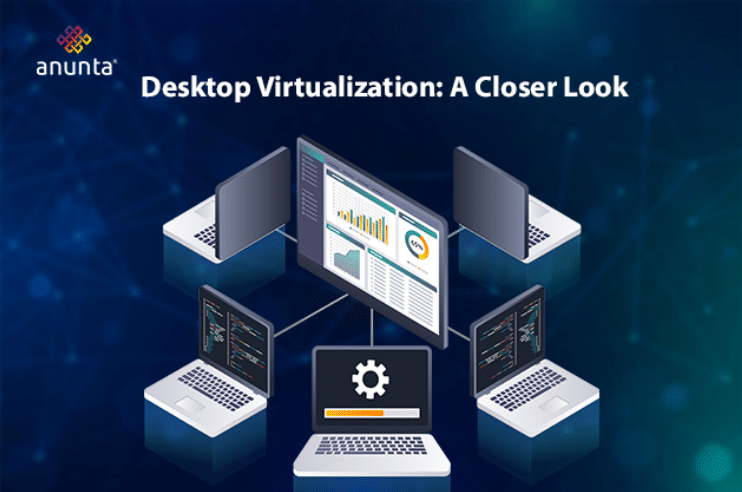
It is the process of creating virtual desktops that users can access from any device, offering numerous benefits such as enhanced flexibility, cost savings, and centralized management. Selecting the right type of desktop virtualization is crucial for businesses, as it can greatly impact both efficiency and scalability. Understanding the various forms of desktop virtualization helps organizations align their infrastructure with their specific needs.
RDaaS allows users to access desktop environments hosted in the cloud remotely. By delivering desktops over the internet, RDaaS enables employees to work from any location with ease.
RDaaS offers several key benefits, including scalability, which allows businesses to easily adjust the number of virtual desktops as their needs evolve. It also provides flexibility in managing resources and reducing costs since organizations only pay for what they use.
Many businesses, especially those with distributed teams, utilize RDaaS to empower remote workers and streamline operations. For instance, companies in the finance and healthcare sectors rely on RDaaS for secure, compliant access to sensitive applications.
Application virtualization separates the application layer from the underlying hardware and operating system. Instead of running directly on the user’s device, applications are delivered virtually.
By improving compatibility across devices and operating systems, application virtualization reduces the effort required to maintain and update software. This also enhances security, as sensitive applications are run in a controlled, centralized environment.
While application virtualization can simplify management, organizations must ensure that they have sufficient bandwidth and support for legacy applications. A phased implementation approach and robust training can mitigate these challenges.
SBC centralizes computing resources by running applications and desktops on a server while users interact with them via thin clients or lightweight devices.
SBC simplifies IT management by keeping all applications and data on a central server, reducing the risk of data breaches or hardware failures. This approach also cuts hardware costs, as users can work with basic devices rather than high-powered machines.
While RDaaS and SBC both deliver virtual desktops, SBC relies on on-premise or private data centers, offering more control for organizations that handle sensitive information. Application virtualization, on the other hand, focuses purely on delivering applications without virtualizing the entire desktop.
VDI enables organizations to deploy desktops virtually. Each desktop operates in a virtual machine on a centralized server.
VDI provides excellent flexibility by allowing businesses to choose between persistent, non-persistent, and pooled desktop configurations. This ensures that users have access to a consistent work environment while also benefiting from enhanced security and scalability.
Hosted desktop virtualization outsources the management and delivery of virtual desktops to a third-party provider.
By leveraging an external provider, businesses can reduce the need for in-house IT resources, allowing teams to focus on strategic tasks. This model is particularly beneficial for scaling, as providers handle infrastructure upgrades and maintenance.
When selecting a hosted desktop virtualization provider, factors like data security, compliance, and customer support should be at the forefront. It’s essential to assess the provider’s track record and ensure they can meet your performance requirements.
Determining the right desktop virtualization solution depends on a variety of factors, such as business size, security requirements, and budget. Here’s a simplified decision matrix to help evaluate the options:
| Solution | Scalability | Security | Cost Efficiency | Use Case |
| RDaaS | High | Moderate | High | Remote work, flexible scaling |
| Application Virtualization | Moderate | High | Moderate | Application management |
| SBC | Moderate | High | High | Centralized control |
| VDI | High | High | Moderate | Custom desktops, data control |
| Hosted Desktop | High | High | Moderate | Outsourcing, maintenance-free |
Recommendations
Desktop virtualization offers a wide array of solutions, each suited to different organizational needs. Whether opting for RDaaS for flexibility or VDI for enhanced control, the right solution can transform your IT orbit. To make the most informed decision, consider your business’s goals, resources, and security needs.
Always seek expert advice when navigating the complexities of desktop virtualization to ensure you implement the most suitable solution for your future growth.
Q: What is desktop virtualization?
A: Desktop virtualization is the process of creating virtual desktops that users can access from any device, offering benefits such as flexibility, centralized management, and cost savings
Q: What are the main types of desktop virtualization?
A: The main types include:
Q: How does RDaaS benefit businesses?
A: RDaaS offers scalability, cost efficiency, and flexibility. It enables remote workers to access desktops from anywhere, while businesses pay only for the resources they use.
Q: What is the difference between VDI and SBC?
A: VDI deploys desktops via virtual machines, offering personalized configurations. SBC centralizes resources on a server, allowing users to interact via thin clients. This provides greater control but often requires on-premise infrastructure.
Q: Which desktop virtualization model is best for remote teams?
A: For remote teams, RDaaS is a cost-effective and flexible option, as it allows easy scaling and access from any location over the internet.
Research Review with Anunta’s CTO | Jan 14 | 12PM PST/3PM EST